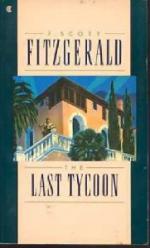|
This section contains 6,745 words (approx. 23 pages at 300 words per page) |

|
Often well educated in white schools and comfortable in white society, the first generation of Indian leaders to emerge on the national level included persons like Charles Eastman and Gertrude Bonnin. Yet despite their acceptance of assimilationist ideals, they also contributed a new ideal of their own: a Pan-Indian identity that emphasized the commonness of Indians of all tribes. They recognized things that Indians held in common, much more than previous tribal leaders had done. While they valued a "civilized" lifestyle, they also respected their native traditions enough to recognize the injustices of the federal colonial domination.
In November of 1940 F. Scott Fitzgerald wrote to Edmund Wilson from Hollywood about the novel on which he was then working:
I think my novel is good. It is completely upstream in mood and will get a certain amount of abuse but it is first hand and I am trying a...
|
This section contains 6,745 words (approx. 23 pages at 300 words per page) |

|


